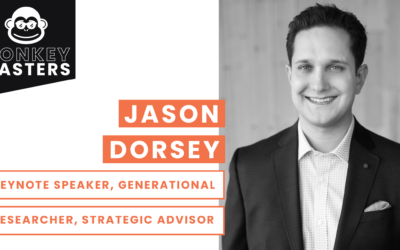In Part Two of this series, I unveil my secret formula for being discerning when it comes to recurring revenue businesses as an investment opportunity – and how to avoid feeling THE CHURN!
In the last post, I Scream, You Scream, We All Scream for Recurring Revenue, I made the case for why it’s so important to be very careful about how you think about revenue streams. In this post, I’m giving out my secret formula for managing the value of recurring revenue.
And, like the best ice cream, there are only a couple ingredients, with the key being a low and slow churn.

Here’s my secret formula for looking at recurring revenue. It goes something like this:
Value of RR (VoRR) = Net Churn Rate X Stickiness Factor
At the highest level, this formula will help anyone involved in the management of a recurring revenue business begin to break down a very simple concept to a more granular level.
By doing this, investor and entrepreneurs can develop a consistent way to determine what is going on with the customer – remember, that is what it is all about, right? – and avoids false positives when it comes to the future of the business.
Second, this formula breaks down the driver of recurring revenue between two very different variables. The first aspect (churn or retention rate) really measures how well you are managing A SALES PROCESS as it relates to customer contract management and renewals. For most SaaS and Cloud companies, this is focused on Customer Success Management (“CSM”) and the holistic way to manage a customer after the original subscription is generated.
The second concept is equally (or perhaps more) important as it takes into account several key attributes around the solution that drive retention OUTSIDE of the sales / customer success / renewals process. This concept speaks to the solution’s attributes and is really more a measure of the product design / management process underlying the subscription offered in the marketplace.
The key here is to take both into account, which isn’t as easy as a simple mathematical formula…
Slow Churn

It is shocking how *few* executives, board members or investors actually understand how to accurately calculate the most important financial metric for recurring revenue business, Net Churn Rate.
Net churn rate (the opposite of which can be consider renewal rate) is the most commonly misunderstood metric in the history of business and financial reporting.
This metric suffers from both errors of omission and commission – so much so that I don’t have enough space to summarize all that I saw and learned during my time at ServiceSource.
Rather, it is best to do some research here to truly understand the best way to calculate this key metric, which in its simplest form is the percentage of recurring revenue (both customer and contract value) that you retain annually from your current customers base.
The net component ensures that you consider upsell, cross sell and partial renewals as well as any discounts provided to a customer during a renewal cycle. ServiceSource has so much great information here that I would suggest anyone who really wants to understand this to download one of the several white papers on this topic from the company’s web site. Bessemer Ventures also has done some really good work on this topic, including proposing a new financial metric called AMRR (committed monthly recurring revenue – link here).
Will It Stick?
The churn rate measures the sales / customer success piece, but even more important is: what’s the sticky factor? In the next post, Sticky Sweet, I’ll cover how to measure stickiness so you can complete your formula.


